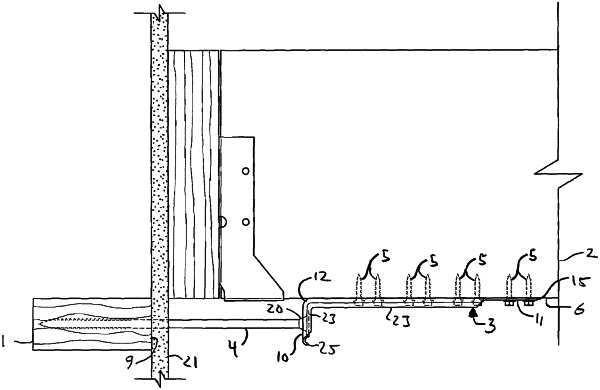| CPC E04B 1/388 (2023.08) [E04B 1/2608 (2013.01); E04B 1/2612 (2013.01); F16B 25/10 (2013.01); E04B 2001/2684 (2013.01); E04B 2001/405 (2013.01)] | 20 Claims |

|
1. A connection that is part of a building structure, between an anchored member and an anchoring member made with a connector, one or more separate anchors and one or more separate fasteners, the connection comprising:
a. the anchored member, having an attachment face;
b. the anchoring member disposed in relatively close association with the anchored member and having an anchoring face;
c. the one or more separate anchors penetrating and anchored in the anchoring member;
d. the one or more separate fasteners penetrating and anchored in the anchored member;
e. the connector having a seat member and a back member disposed at an angle to the seat member with the back member connected to the seat member at a lateral juncture, and the seat member has an end edge opposed from the lateral juncture and the seat member has opposed side edges running between the lateral juncture and the end edge, and the back member has an end edge opposed from the lateral juncture and the back member has opposed side edges running between the lateral juncture and the end edge, and wherein the seat member receives and is connected to the one or more separate anchors and the back member receives and is connected to the one or more separate fasteners; wherein,
f. the seat member has one or more openings for receiving the one or more separate anchors and the end edge of the seat member is formed with an upturned flange; and
g. one embossment is provided in the back member that extends into the seat member.
|